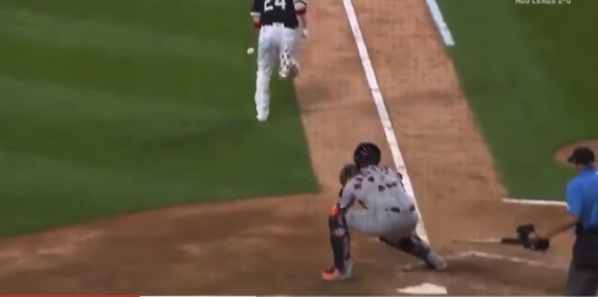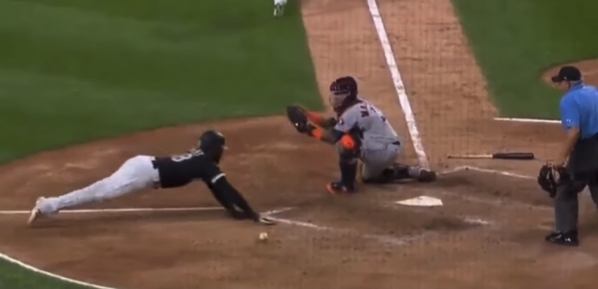@JohnF posted:22and25 my caution was more to your line "The rule is that the batter/runner establishes the line out of the box and only has to be in the designated path in the last 45 feet before 1st base. " - the "only has to be" part is only true on the throw to 1B... Your theoretical SS example could happen, but is a bit overstated IMO.
Consider the PU's PoV, the "time" he had, and what the situation was w/ R3 (and he got trucked too). Without R3, he trails BR. With R3 you've got to get into the best position possible - do you peek to see which way R3 is coming? Do you watch the play from F3? What is the C doing? He's probably taking that play in the "left pocket" because the C set up on the right side of the plate. He's also thinking (now) to make sure C is not obstructing the plate without the ball. The BR is the least of his concerns, besides the C is at least partially blocking his view as I don't see him in the right pocket of the C in the picture where Grandal gets hit.
Now let's consider U1 - does he have the best angle to determine interference (regardless of intent) - what kind of time did he have, what did he have to think about on that play? Do you believe he was thinking about how the batter swung and watched his first few steps? In one picture above, just before fielding the ball it looks like U1 is just taking a step onto the field... Part of me wonders what happens if F3 says eff it, I'm going to get the out at 1B (don't see F4 coming, but P could be). Still because F3's momentum is taking him to the plate U1 is working to get into position, but yeah probably just doesn't have the best angle to determine and is also moving on the play.
I still wonder about the C position on this - why wasn't he in front/center of the plate ready to receive a throw? Can you or anyone judge the intent of the defense? The 1B wasn't "in on the grass" on the play - he looks like he's playing it halfway. These are keys all 3 teams look for (offense, defense, and umpires).
Anyway, let's say you can change the rule, what do you write? Allow me to remind you that the wording used would then be applicable to all bases. I've seen R3 be on the infield grass trying to make it harder to make the play to the plate - do you call him out just because he's there or only if he gets pegged in the back with the ball? Should we talk about the "skunk in the outfield", too ;-
As to the position of PU and catcher, I think these shots tell the story. As the ball is put into play PU takes a neutral position behind the plate to set up for a view or both R1 and R3. C does move to front center of plate. PU’s attention is in the direction of Grandal until after ball hits him, as seen in pic 1, then he rotates his head 90 degrees (this is seen clearly in video) for a view of the potential play at the plate .
As to U1, there is no screen shot that shows his face but he is positioned directly behind 1B and his feet are squared to position him to look down the line to HP throughout the play. He may well have been looking elsewhere though.
Again, I think the only aspect of the play discussed by the umpires or brought up by Baker were a.) Grandal was on the grass which is not on its own against the rules and b.) Did he make an overt move to contact the ball with his arm or shoulder and he did not. I still content that the path was the overt attempt to interfere and that was not likely discussed and may not have been enough to change the call based on how the rule is written.
As for rewriting the rule I would simply add:
A runner shall be deemed to have interfered if, upon the judgement of the umpire, he both chooses a path that is determined not to be a direct path to the base and interferes with the defense’s ability to complete an out.
Think of how they changed the slide rule at 2B. If the umpire deems that a runner did not take a direct path into 2B, in an attempt to interfere with the defense’s ability to complete an out on the batter runner, the batter runner is called out.
I am sure you can find a quibble with that wording and I am sure it could be written better but you get the idea. Most baseball rules have an intended and generally accepted understanding, spirit of the rule and such, that can be easily adopted by the umpires.




